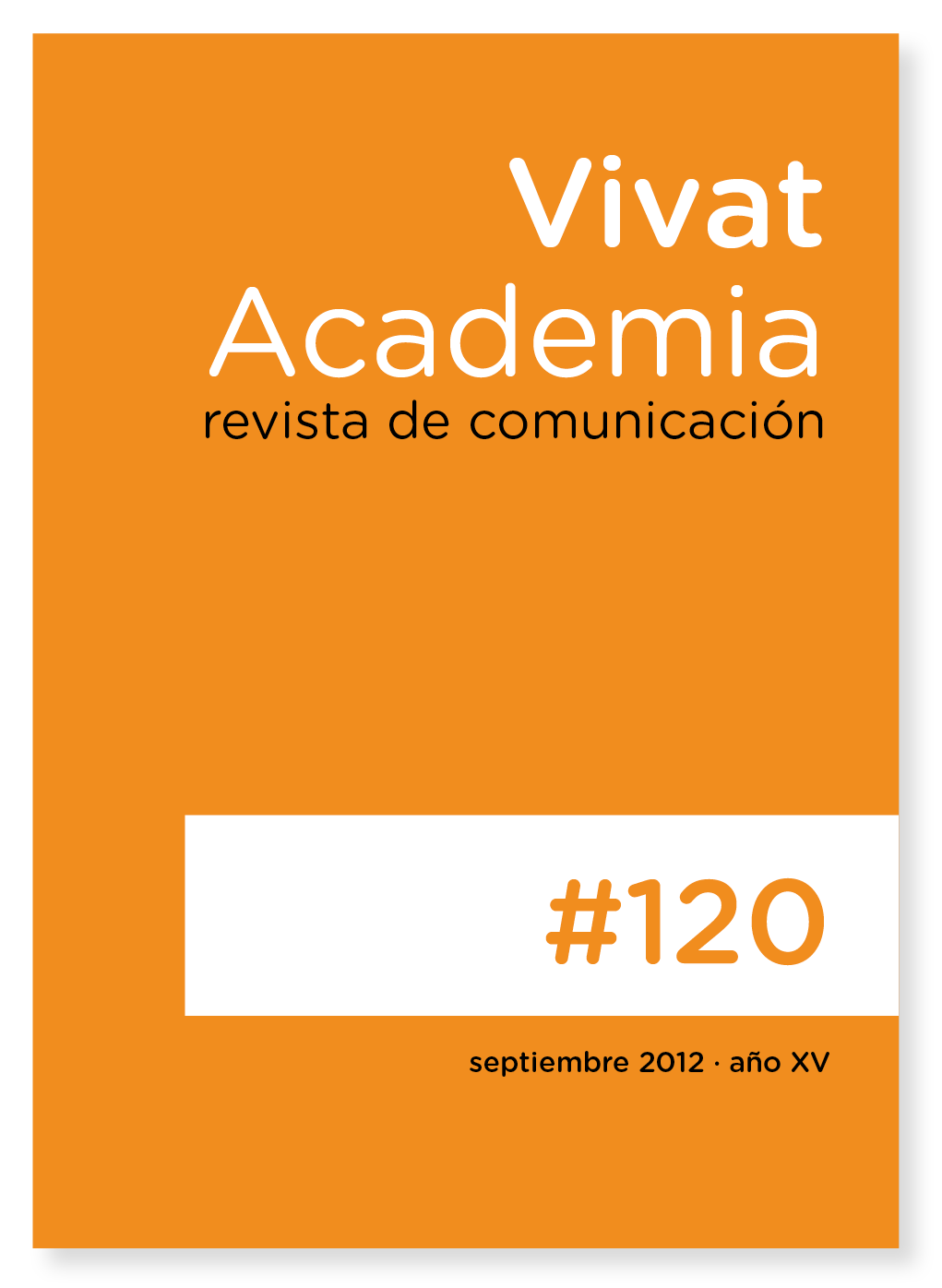La comunicación corporativa a través de las páginas web: el caso de las ONGs españolas
Contenido principal del artículo
Resumen
Descargas
Detalles del artículo
Citas
Biloslavo, R. y Trnavcevic, A. (2009). “Web sites as tools of communication of a green company”. En: Management Decision, vol. 47, nº 7 p.1158–1173.
Capriotti, P. (2005). Planificación estratégica de la imagen corporativa. Barcelona: Ariel Comunicación.
Chaudhri, V. y Wang, J. (2007). “Communicating corporate social responsibility on the internet – A case study of the top 100 information technology companies in India”. En:
Management Communication Quarterly, vol. 21, nº 2, p. 232–247.
Connolly–Ahern, C. y Broadway, C. (2007). “The importance of appearing competent:
An analysis of corporate impression management strategies on the World Wide Web”.
En: Public Relations Review , vol. 33, nº 3, p.343–345.
Diario 20 Minutos (2007). Detenido el presidente de la ONG Anesvad por apropiación indebida de fondos. Edición Digital, 9 de Marzo. Disponible en http://www.20minutos.es
Diario 20 Minutos (2007). Anticorrupción investiga a Intervida por el posible de desvío de fondos de apadrinamientos para fines privados. Edición Digital, 3 de Abril.
Disponible en http://www.20minutos.es
Esrock, S.L. y Leichty, G.B. (2000). “Organization of corporate web pages: Publics and functions”. En: Public Relations Review, vol. 26, nº 3, p. 327–344.
Estudio General de Medios (E.G.M.) (2009). Estudio de la audiencia de internet. Octubre / Noviembre 2009. Disponible en http://www.aimc.es
Fundación Eroski (2005). Las ONGs ordenadas por presupuesto. Disponible en
http://ong.consumer.es/por–presupuesto/?f=10000000
Haselkorn, M. y Walton, R. (2009). “The Role of Information and Communication in the Context of Humanitarian Service”. En: IEEE transactions on professional
Communication, vol. 53, nº 4, p.325–328.
Herranz De La Casa, J.M. (2007). Disponible en:
http://www.consumer.es/web/es/solidaridad/proyectos_y_campanas/2007/08/22/166049.php (7/06/11).
Hurst, M. (2010) “Wikihappiness, un modelo de ONG basada en las redes sociales”.
Yorokubu, vol. 3, p. 34.
Maiers, C., Reynolds, M. y Haselkorn, M. (2005). ”Challenges to effective information and communication systems in humanitarian relief organizations”. En IEEE
International Professional Communication Conference (IPCC), p.82–91.
Patsioura, F., Vlachopoulou, M. y Malama, E. (2007). “Corporate advertising web sites– Effectiveness in terms of promotion, communication and relationship marketing”.
En: ICE–B 2007: Proceedings of the second international conference on e–Business, p. 301–
Patsioura, F., Vlachopoulou, M. y Malama, E. (2008). “Corporate Advertising Web Sites as Integrated Relationship Marketing Mediums: Effects of Communication,
Feedback and Customer Service on Advertising Effects”. En: Innovation and knowledge
management in business globalization: theory & practice, Vols 1 y 2 , p. 1336–1341.
Sanz De La Tajada, L.A. (1996). Auditoría de la imagen de la empresa. Métodos y técnicas de estudio de la imagen. Madrid: Síntesis.
Soria, M.M. (2009). “Cómo las ONGs españolas afrontan una crisis de imagen a través de la sala de prensa virtual”. En: Razón y Palabra, vol. 70.
Vaccaro, A. y Madsen, P. (2008). “ICT and an NGO: Difficulties in attempting to be extremely transparent”. En: Transparency, Information and communication technology: social responsibility and accountability in business and education. Transparency and Social Responsibility Conference Catholic Univ Lisbon, Sch Business & Econ, Lisbon. p. 51–
Vestergaard, A. (2008). “Humanitarian branding and the media The case of Amnesty International”. En: Journal of language and politics, vol. 7, nº 3. p. 471–493.
Villafañe, J. (1993). Imagen positiva. Gestión estratégica de la imagen de las empresas.
Madrid: Pirámide.





